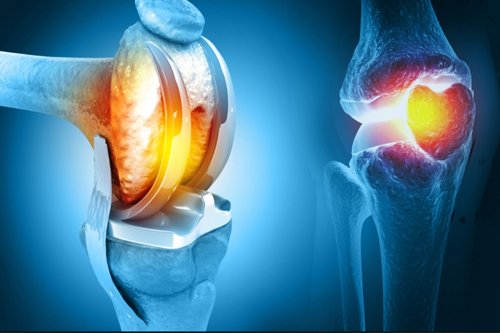Meet Our Doctor
Dr. Vrushabh Kumbhare
Orthopedic and Joint Replacement Surgeon
Educational details:
- M.B.B.S. (4.5 years +1 year Internship): August 2009 - April 2015 N K P Salve institute of medical sciences and research centre, Digdoh hills, Nagpur, Maharashtra (Under Maharashtra University of Health Sciences, Nashik)
- M.S. Orthopedics(3 years): May 2017- August 2020 Jawaharlal Nehru Medical Collage, Sawangi (Meghe) (Under Datta Meghe Institute of Medical Sciences Deemed to be University)
Experience:
- Senior resident: (September 2019 – May 2021) Department of Orthopaedics, Jawaharlal Nehru Medical Collage, Sawangi (Meghe)


Dr. Vrushabh Kumbhare
Orthopedic and Joint Replacement Surgeon
Joint Replacement In Nagpur
Joint replacement, also known as arthroplasty, is a surgical procedure in which a damage or disease joint is replace with an artificial joint, known as a prosthesis. The goal of joint replacement surgery is to relieve pain, restore joint function, and improve the overall quality of life for individuals suffering from severe joint conditions. This procedure is commonly performe on weight-bearing joints such as the hip and knee, but it can also be done on other joints like the shoulder, elbow, and ankle. Feel free to visit our clinic and schedule an appointment.
Joint replacement surgery is typically recommend for individuals who have not achieve sufficient relief from pain and impaired function through non-surgical treatments.

Common types of Joint Replacement
Total Hip Replacement (THR):
- Thus, In this procedure, the damage hip joint is replace with an artificial joint made of metal, plastic, or ceramic components. It involves replacing the ball and socket of the hip joint with prosthetic components.
Total Knee Replacement (TKR):
- Total knee replacement involves replacing the damaged surfaces of the knee joint with metal and plastic components. Once, The procedure can alleviate pain and improve mobility in individuals with severe knee arthritis or other debilitating knee conditions.
Total Shoulder Replacement:
- This surgery involves replacing the damaged or arthritic shoulder joint with an artificial joint. It can be performed to address conditions such as osteoarthritis or rotator cuff tears.
Total Elbow Replacement:
- Therefore. Total elbow replacement is a procedure where the damaged elbow joint is replaced with an artificial joint. It is often done to address conditions like rheumatoid arthritis or severe fractures.
Ankle Replacement:
- Firstly, Ankle replacement surgery is performed to address severe arthritis or joint damage in the ankle. Once, It involves replacing the damaged parts of the ankle joint with artificial components.
Joint Replacement Procedure
1. Preoperative Assessment:
Thus, Before undergoing joint replacement surgery, the patient goes through a comprehensive preoperative assessment, which may include:
- Once, A thorough physical examination.
- Thus, Imaging studies such as X-rays, MRIs, or CT scans to assess the extent of joint damage.
- Once, Blood tests and other diagnostic tests to evaluate overall health and identify any potential risks.
2. Anesthesia:
On the day of the surgery, the patient is administere anesthesia to ensure they are comfortable and pain-free during the procedure. Firstly, The type of anesthesia (general or regional) will be determine base on the joint being replace and other factors.
3. Incision:
Once, The surgeon makes an incision over the affected joint to access the joint space. Thus, The size and location of the incision may vary depending on the joint being replace.
4. Removal of Damage Tissue:
The damage or arthritic parts of the joint, including cartilage and bone, are carefully remove.Once, This step is crucial for preparing the joint for the insertion of the prosthetic components.
5. Prosthetic Implantation:
Firstly, The surgeon replaces the remove joint surfaces with artificial components, known as prostheses. The prostheses are typically made of metal, plastic, or ceramic materials and are designe to mimic the natural function of the joint.
For example:
- Thus, In a total hip replacement, the damaged hip joint’s ball and socket are replaced with prosthetic components.
- For instance, In a total knee replacement, the damage surfaces of the knee joint are replace with metal and plastic components.
6. Closure of Incision:
Thus, Once the prosthetic components are securely in place, the surgeon closes the incision using sutures or staples.
